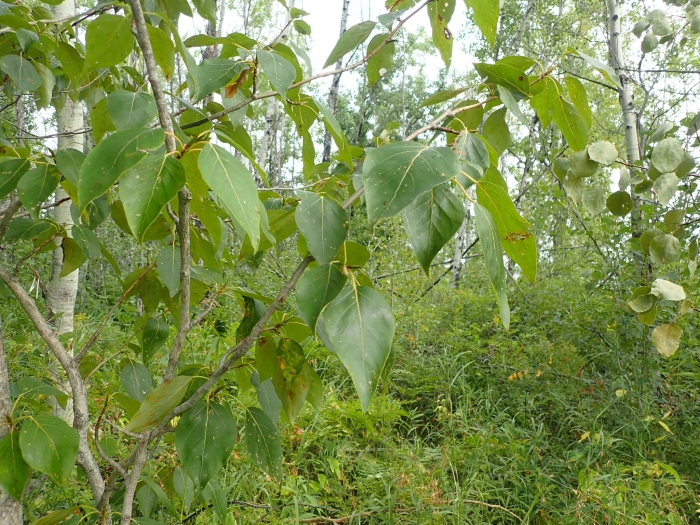Balsam Poplar
(Populus balsamifera)
Balsam Poplar (Populus balsamifera)
/
/

Mary Krieger
CC BY 4.0




















































Estimated Native Range
Summary
The tree’s most notable feature is its fragrant, sticky, resinous buds that release a pleasant balsam scent, similar to that of the balsam fir. Balsam Poplar is valued for its rapid growth and ability to establish in disturbed sites, making it useful for reforestation projects and erosion control. It is also planted as a windbreak or for ornamental purposes in larger landscapes. The tree prefers full sun to part shade and is adaptable to a wide range of soil moisture conditions, though it grows best in moist to wet soils with good drainage. While it is generally short-lived, some specimens have been found to be over 200 years old. Wildlife, including various mammals and caterpillars of Lepidoptera, benefit from the tree as a food source. However, gardeners should be aware of its potential invasiveness outside its native range and its susceptibility to diseases such as leaf rust and canker, as well as pests like the poplar borer.CC BY-SA 4.0
Plant Description
- Plant Type: Tree
- Height: 70-90 feet
- Width: 25-40 feet
- Growth Rate: Rapid
- Flower Color: N/A
- Flowering Season: Spring
- Leaf Retention: Deciduous
Growth Requirements
- Sun: Full Sun, Part Shade
- Water: High
- Drainage: Fast, Medium, Slow
Common Uses
Bee Garden, Bird Garden, Butterfly Garden, Erosion Control, Fire Resistant, Fragrant, Water Garden
Natural Habitat
native to northern forests, riparian zones, and wetlands across Alaska, Canada, and the many regions of the USA
Other Names
Common Names: Balm Of Gilead , Black Poplar , Cottonwood , Eastern Balsam Poplar , Hackmatack , Tacamahac , Bamtree , Tacamahac Poplar , Tacamahaca , Balsampappel
Scientific Names: Populus balsamifera , Populus balsamifera var. subcordata , Populus balsamifera var. californica , Populus woobstii , Populus acladesca , Populus balsamifera f. angustata , Populus balsamifera f. candicans , Populus balsamifera var. lanceolata , Populus balsamifera var. woobstii , Populus suaveolens var. woobstii
GBIF Accepted Name: Populus balsamifera L.